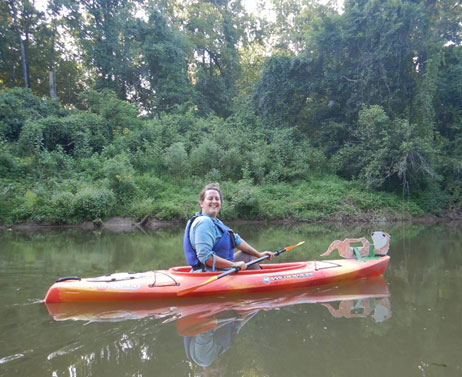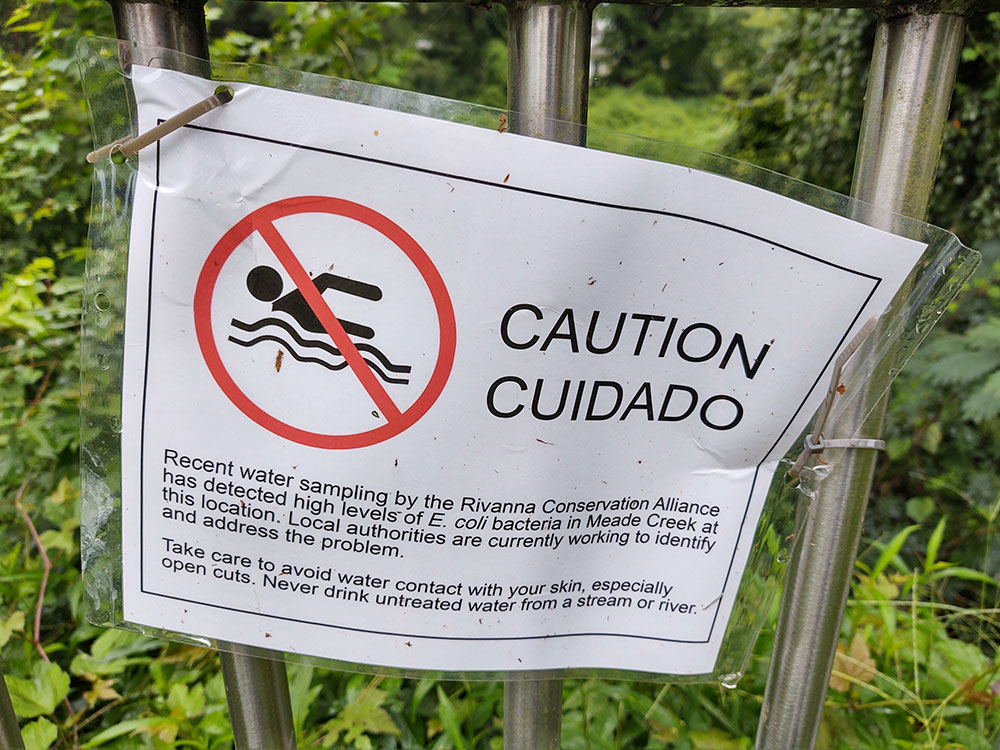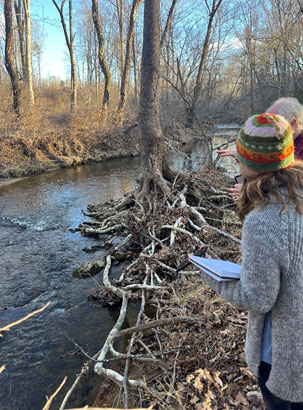
There was a mink sighting at Trevillian’s Creek at the Lewis and Clark Exploratory Center at 11 AM on August 17, 2022! Environmental educator Brooke Asher, a retired Albemarle County science teacher, was helping with a stream survey near the Route 20 culvert when she saw the creature dart into the tall grasses. At this point, where the stream enters Darden Towe Park and the Exploratory Center from higher up on Trevillian’s Mountain, the stream is just the way that minks prefer—filled with dead branches and undisturbed rocks, water cascading towards the Rivanna River. People rarely go there and the surrounding area is left unmown.
Minks disappear from their habitat when a stream is straightened and cleared of debris. In the same way that raking a yard disturbs the reproduction of fireflies and other insects, cleaning up a stream in the wrong way can damage the ecosystem. A changing pattern of rainfall and erosion, as well as silt from construction projects, can also impact the course of a stream and its debris. At the culvert and below, Trevillian’s Creek is farther away from park visitors and from cairn and mini-dam builders.
Minks are considered an indicator species by some scientists, but not all. Their reproductive systems are vulnerable to pollution, and they are sensitive to mercury in fish. Their presence, particularly because they only have a lifespan of about four years, is a good sign of stream health. An aquatic species, the mink has webbed feet and in addition to fish eats crayfish, mussels, and clams. They also eat small mammals such as rats and rabbits.
The scientists who question the mink’s status as an indicator species raise the point of the mobility of a mink. These scientists find it difficult to judge the health of the locality from the mink, since the mink can change habitat. Minks are comfortable on both land and in the water; escapes from fur farms are relatively frequent.
Darden Towe Park manager Jeremy Hughes says he has not seen a mink in the area for years. The last time he saw one, it was across the Rivanna River from the boat landing.
The mink is a member of the Mustelid, or weasel, family, as are otters. While the mink is busy hunting on Trevillian’s Creek, her relatives the otters are occupied with eating freshwater mussels on the Rivanna River (along the banks of the Exploratory Center and approaching Key West going northward). Piles of shells can now be seen underwater and above water, on logs and on banks. Sometimes otter tracks will be visible on the mud of the logs.
In the early 2000’s, from my observations and the accounts of others, otters were more prevalent in the Fluvanna area and were rarely seen in the Charlottesville area. Now, it is quite easy to spot them in Charlottesville—provided you’re willing to go out in your canoe or kayak (or paddleboard) at dawn or dusk. While the mink is secretive, the otters seem unafraid. A limited human presence does not deter them.
While swimming, an otter can resemble a muskrat or a young beaver, but they are longer and narrower. Watch for the whiskers!




